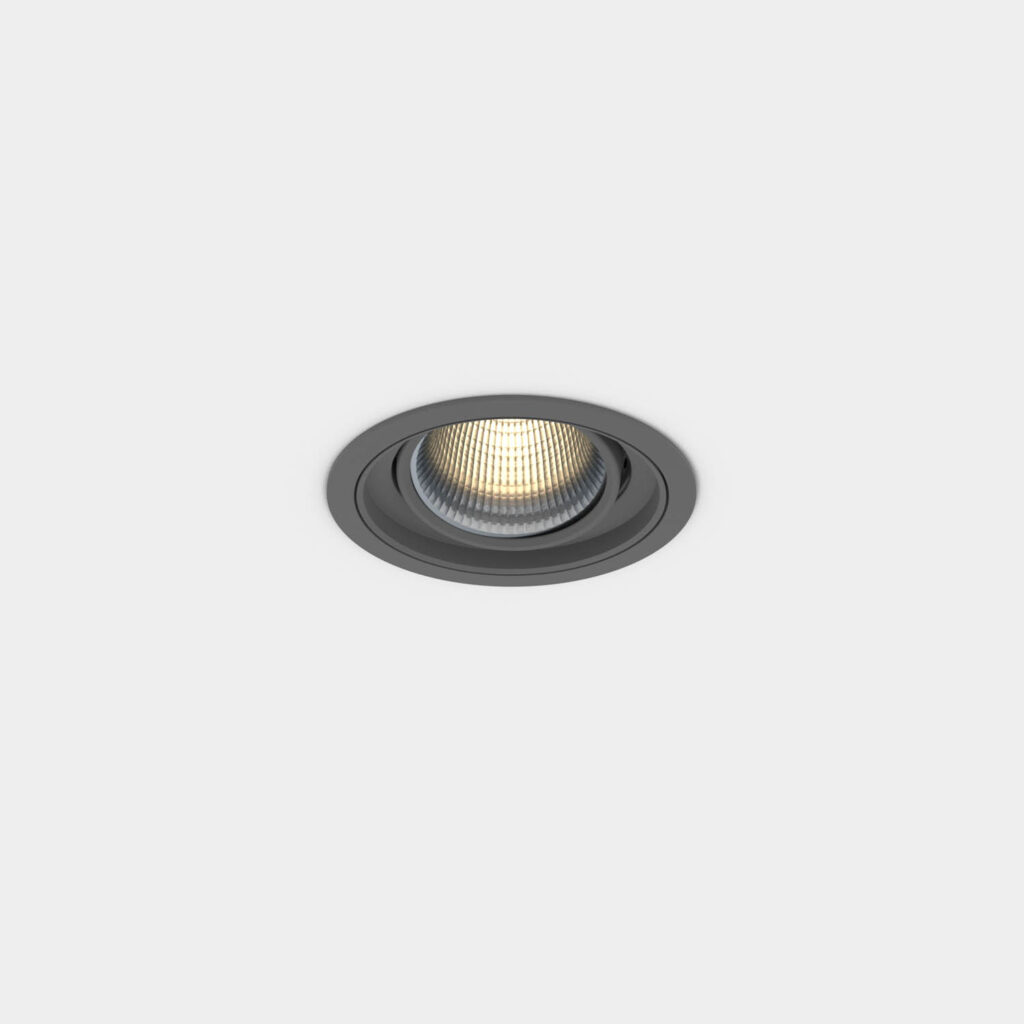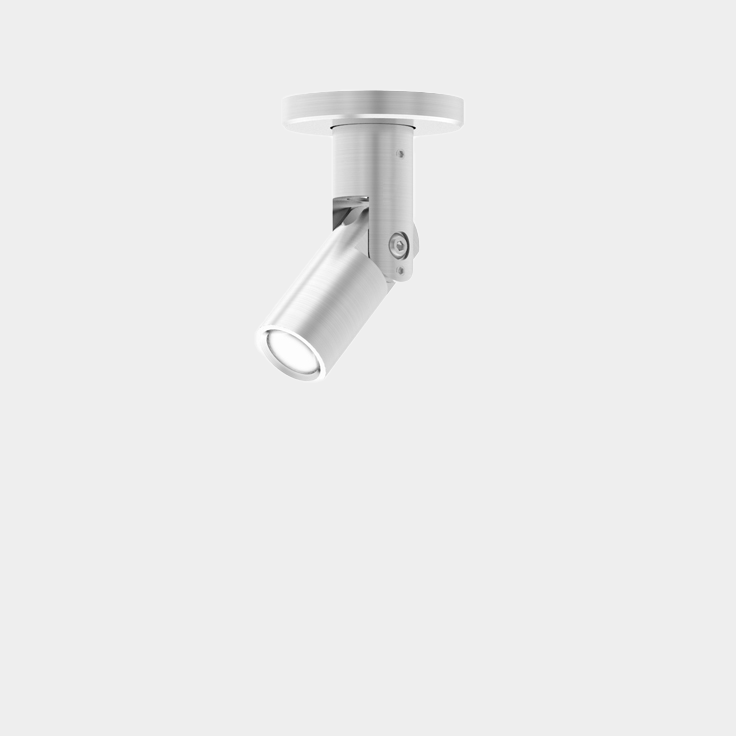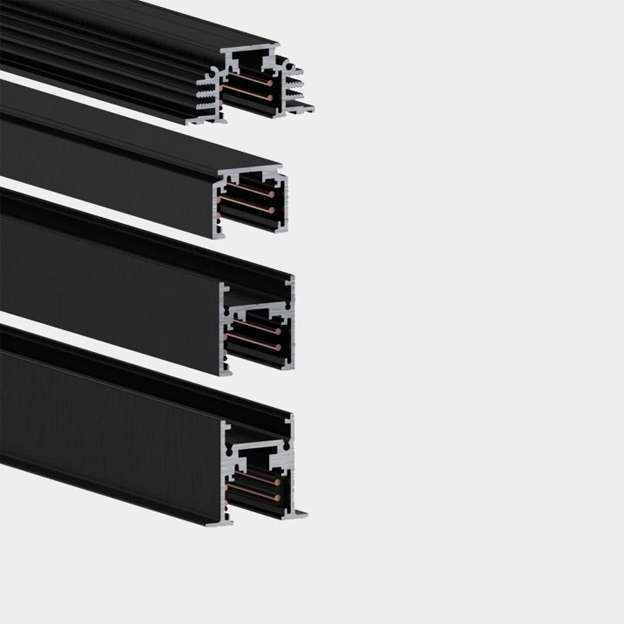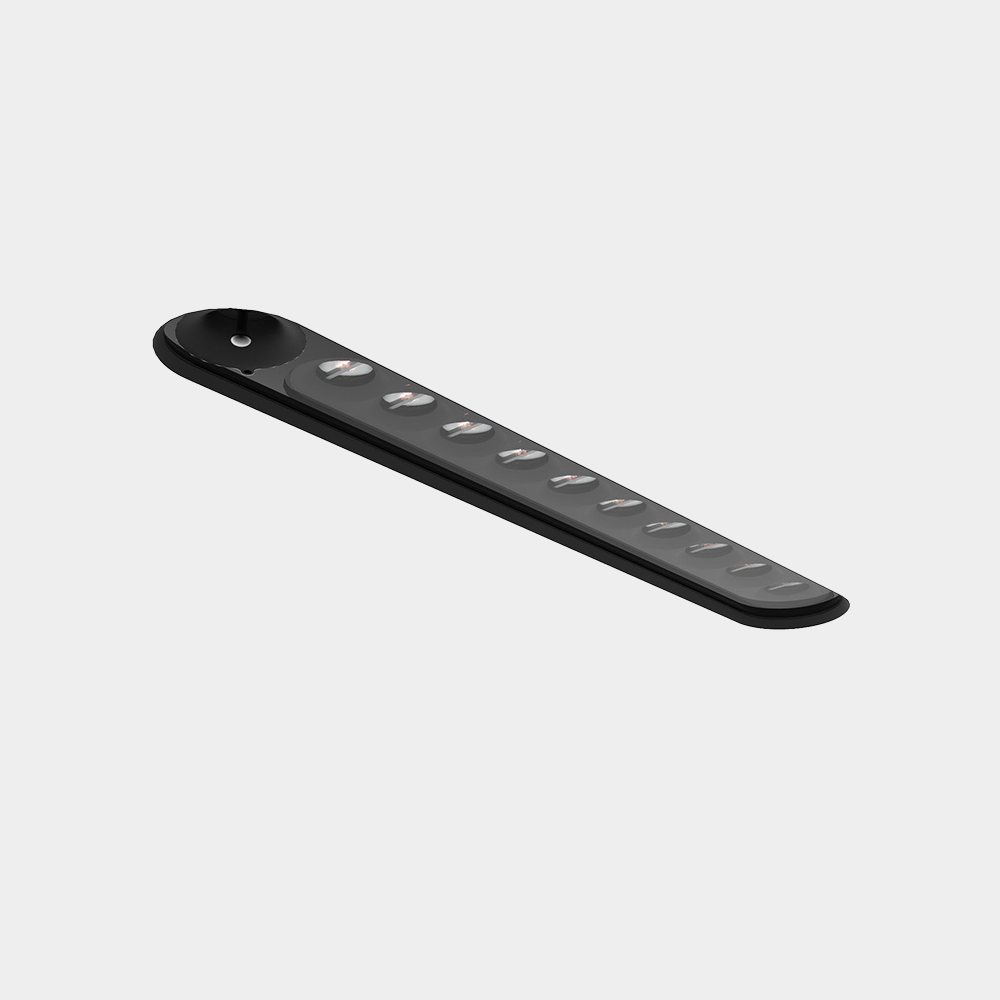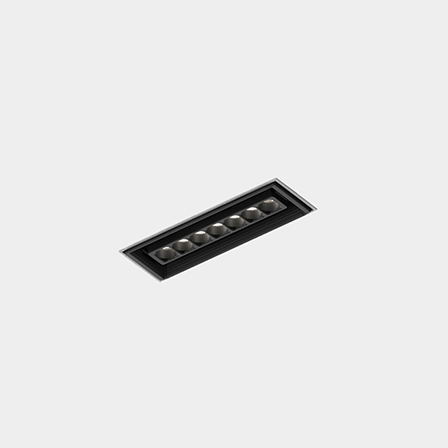Spaces: “OPEN” by Flint Collective NYC
COVID-19 has changed the way people interact with public spaces, especially in densely populated cities like New York. Neighborhoods grew quiet during the onset of the pandemic, forcing several stores and local businesses to close their doors. The pandemic also forced residents to stay inside and avoid interacting with each other.
Then came “OPEN,” the first major art installation to debut in the East Village during the pandemic. The brainchild of Flint Collective NYC, a cross-disciplinary design collective of architects, lighting designers, urban planners, interior designers, artists, and art educators, “OPEN” raised awareness of the increasing number of vacant spaces. It also sparked conversations about bringing these previously occupied spaces back to life.
“OPEN” reimagined eight vacant spaces with light, including former boutiques, restaurants, and bars, from September 12-20, 2020. In addition to motivating neighborhood locals to take action and develop new strategies to reopen closed spaces, the installation provided them an opportunity to reconnect safely and support small businesses struggling to keep their doors open.
We had the opportunity to speak with Leela Shanker, the founder of Flint Collective NYC, and Rob Van Antwerp, director of Flint Collective NYC, to learn more about “OPEN.” Read our exclusive interview to learn how the collective is encouraging city dwellers to see their neighborhoods in an entirely new and optimistic light with Luminii.
The Project
Let’s talk about “OPEN.” What inspired this project and what were some of your goals?
Vacancy is not a new issue on the streets of New York City. In the condition of the current pandemic and its resulting economic fallout, however, it is increasingly pronounced. Our installation was designed to raise awareness of the increasing blight caused by vacant spaces and start a dialogue about new opportunities within these spaces.
“OPEN” was the first major art installation to go live in the neighborhood during the pandemic. It allowed residents to experience art and their home in a new way while being socially distant. A number of the sites we had occupied had been vacant for months and have been rented with new businesses following the installations.
By transforming newly “empty” spaces, our provocation was to consider what could come next. We asked residents, local students, and business operators what they would like to see come to the neighborhood in a vacant storefront near them. It was important to us that people recognize the potential that exists here and think about the kind of community we want to be a part of today and tomorrow.
Tell us about the techniques you applied to bring the project vision to life.
Each site had a unique lighting installation developed for it. Two sites utilized custom-made wall modules to create apertures within the spaces. Linear RGBW fixtures were used to create a background of saturated color and a horizon within the aperture. One of these sites included digitally projected video to animate the aperture and enhance the sense of depth through the vacant space.
Two sites utilized linear RGBW fixtures to both graze and wash large planes of diffused material to create a polychrome horizon. Framing projectors created spheres of light placing a moon onto the canvas.
Two more sites made use of linear and directional RGBW fixtures to highlight architectural details to create contrast and depth within the space. Unique wall openings were traced in vibrant colored light using specialized window-frame illuminating fixtures. Framing projectors were also used to create implied apertures and evoke a sense of other spaces beyond what was visible.
How did you apply Luminii’s products to achieve these goals?
Luminii’s LED strip lights and channels were used in wall modules to create rich, saturated fields of color. The products’ optics were ideally suited to further create a smooth gradient horizon within these apertures.
Luminii’s LED tape products and channels were also used in the large-format diffused spaces. Luminii’s linear tape product provided a powerful, saturated wash of light down the entirety of our canvases.
Luminii’s DMX drivers allowed us to tune a very precise and consistent color across the various sites.
What challenges did you face and how did you overcome them?
The biggest challenges we faced were unique site conditions. Each site was unique and despite our numerous mockups, compromises and changes had to be made during commissioning and construction. Our dedicated team and their exceptional coordination and expertise enabled us to find clever solutions to otherwise challenging problems.
What makes this project stand out from others you’ve designed?
The sheer scale and diversity of sites within this project is rare. Across eight sites, different lighting techniques, technologies, and products were all present. Further, this project was developed and executed within three months with final installation taking less than a week.
What feedback did you receive from the community after completing the project?
The community was very receptive to the project and many residents, local business owners, and visitors to the neighborhood expressed their thanks for bringing this work to life. Over the course of the installation, numerous local artists also reached out to us to collaborate.
On the last evening, artists from other mediums (music, dance, theater) added a layer of performance to the sites in response to our installation. A dance troupe occupied one space playing with shadow and silhouette against the illuminated backdrop; handpan drummers and ukulele players occupied another space extending the experience of our light with sound; and podcasters broadcasted a radio play outside another space, bringing a unique story to the installation.
Products
Which Luminii products did you use for this project?
We used the following products to bring “OPEN” to life:
- LLX18-RGBW-30K-SL – RGBW Tape Fixture
- PSDMX-96-24 – DMX driver and Decoder
- KS Channel – Aluminum Extrusion
Tell us more about the product specifications you required to achieve your goals.
Our project required high-quality, fully saturated colors with enough power to wash surfaces up to 10 feet tall. The Luminii RGBW tape provided rich color quality while also outputting enough light to maintain that saturation over the large surfaces we had designed. Additionally, the LED tape needed to be field cuttable to meet the uncertain and often changing dimensional requirements of our sites.
Lumini’s DMX controllers were needed to dial in a precise color tone for each space and needed to be repeatable.
What do you enjoy most about using Luminii’s product line?
Luminii’s product line was very easy to research and installation was very simple. The product was robust and withstood a hasty installation and even more abusive de-installation.
How did you determine the ideal lighting product for a project?
At the start of each project, we identify the key qualities needed for the installation — whether it be cost, lead-time, or quality. We review numerous products for a given installation and mock each product up to make sure it creates the effect we need while meeting our project requirements.
Our project was on a very tight timeline. Our local rep, Stan Deutsch Associates, recommended Luminii based on their quick response time as well as flexibility and availability of the products. We had little time to find alternate solutions should an issue arise and Luminii delivered perfectly.
Your Experience with Luminii
How would you describe your experience working with the Luminii team?
The Luminii team was excellent! Ryan Raica-Scallan and Shelley Haniff are very knowledgeable about the product line and were very quick to help organize our list of materials. The team was also immensely helpful in managing the shipping process and confirming our timelines. We are grateful for their support and excitement to make this project happen in the interest of the community.
What sets Luminii apart from other lighting manufacturers?
Luminii’s diverse product line delivers consistent color and performance across numerous form factors and applications. Few manufacturers produce such diversity with the level of finish and quality that Luminii does.
What would you say is your favorite Luminii product and why?
One of our favorite Luminii products is the Zoom linear LED fixture. The product has a miniscule profile but can also output an astounding amount of light for its size. Further, the diffuser creates a crisp line of light without diode imaging or severe reduction in output. The aluminum housing is very high quality and the whole fixture is precisely assembled.
Your Expertise
How do you determine the best lighting solution for your client projects?
To date, our work has been highly site-specific, working on tight turnaround times for temporary interventions. We need to move fast with minimal permanent impact on the sites we transform. For this reason, we work with the most effective, versatile, and quality products that also work with the challenging budgets associated with community-oriented projects.
What’s your secret to making spaces and objects look their best with light?
We tell stories with light. We respond to the potential of underutilized spaces in the city by creating site-specific treatments of color and lumen play.
What are some technical factors lighting designers should keep in mind when illuminating spaces?
Don’t forget the existing light infrastructure of a site. It can be easy to design without exploring the canvas of borrowed light from surrounding sites or programs. In the context of the city, there are numerous unexpected opportunities to respond to the light of place. New York City is a reservoir of light layers ready to be drawn on!
Can you tell us about people or applications that have inspired you along your journey?
From Jane Jacobs to Agnes Denes, we have been inspired by so many pioneering spirits who thought courageously about the quality of street life and the unique experiences we create and share in New York City.
Though in the case of this project specifically, we have been inspired by every generous soul who got behind this project for the benefit of the community. We are so grateful to the network of people who made this project possible, including lighting manufacturers such as Luminii who donated products, the Designers Lighting Forum New York who supported us financially, and the businesses, community organizations, and creative production teams that donated their time, resources, and positive morale.
The journey of creating and producing the work in the midst of a global pandemic in New York City has been one that will continue to lift us as we move forward into 2021. We hope this work will similarly inspire other artists and designers to give energy to projects that contribute to the life of our neighborhoods as we navigate the ever-evolving conditions of the street and shared public spaces.
Connect with Flint Collective NYC
Email: info@flintcollective
Website: www.flintcollective.nyc
Instagram: @flintcollectivenyc
Twitter: @flint_nyc
Facebook: @flintcollectivenyc
Business Address: 313 East 9th St., Apt. 4W



























